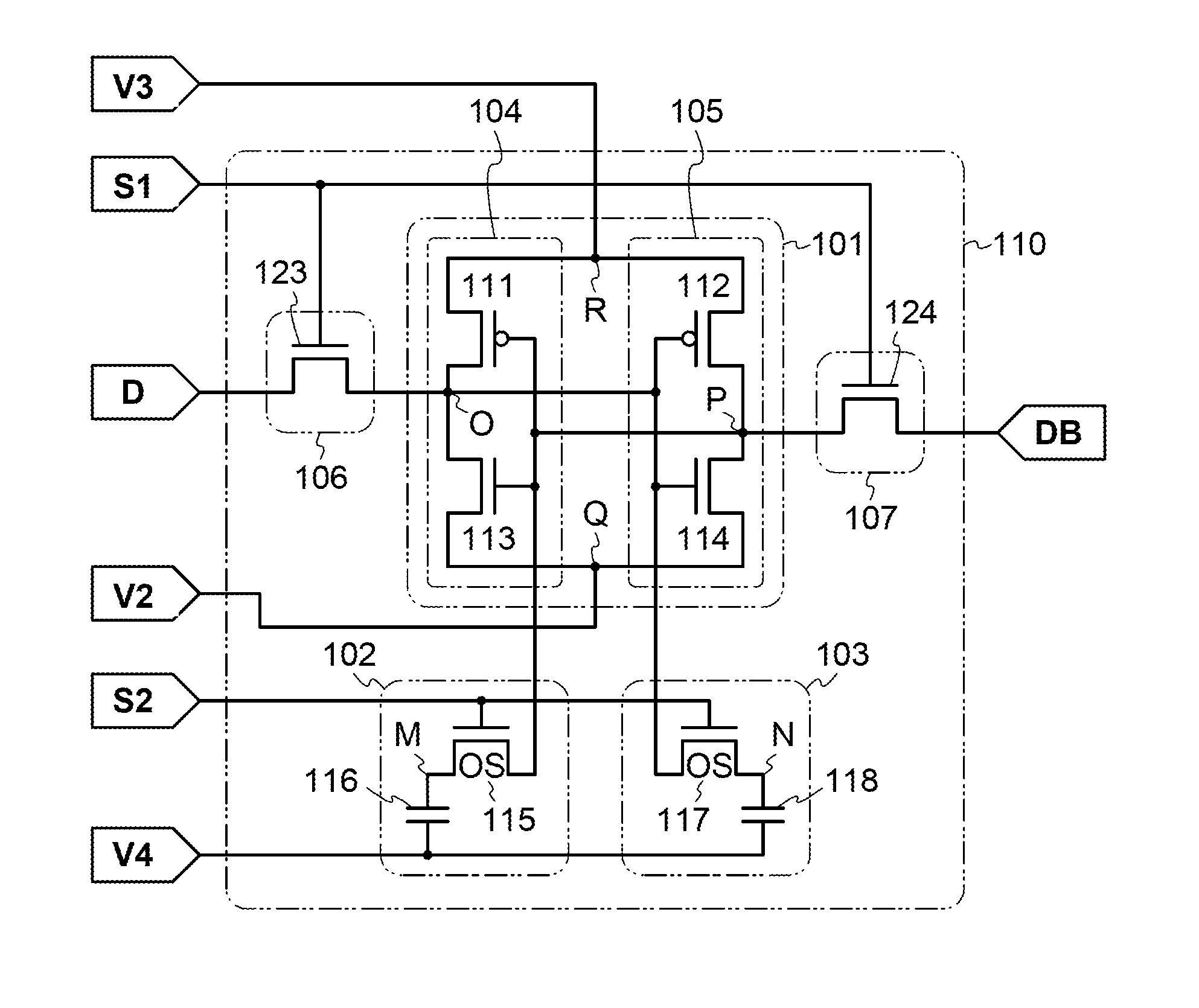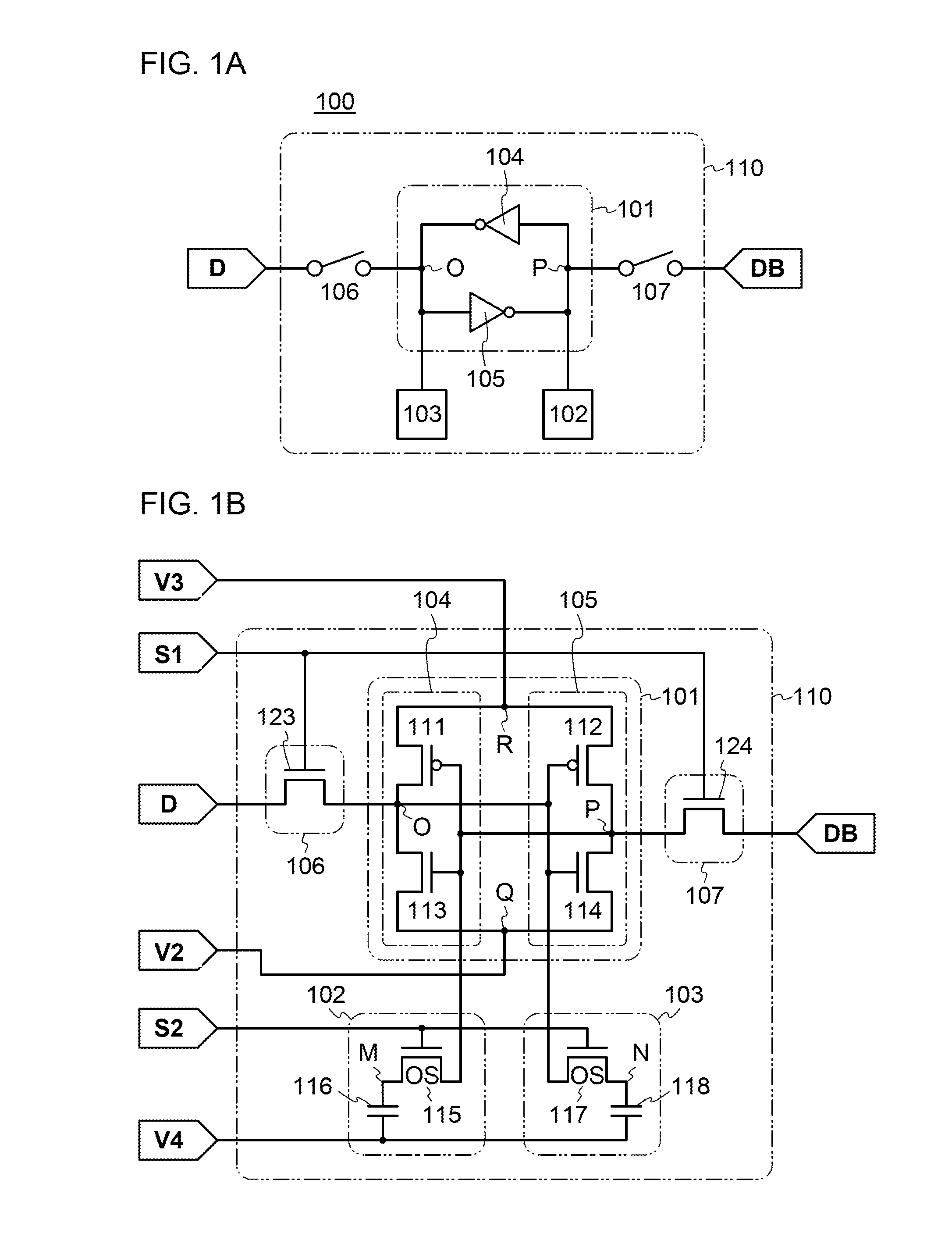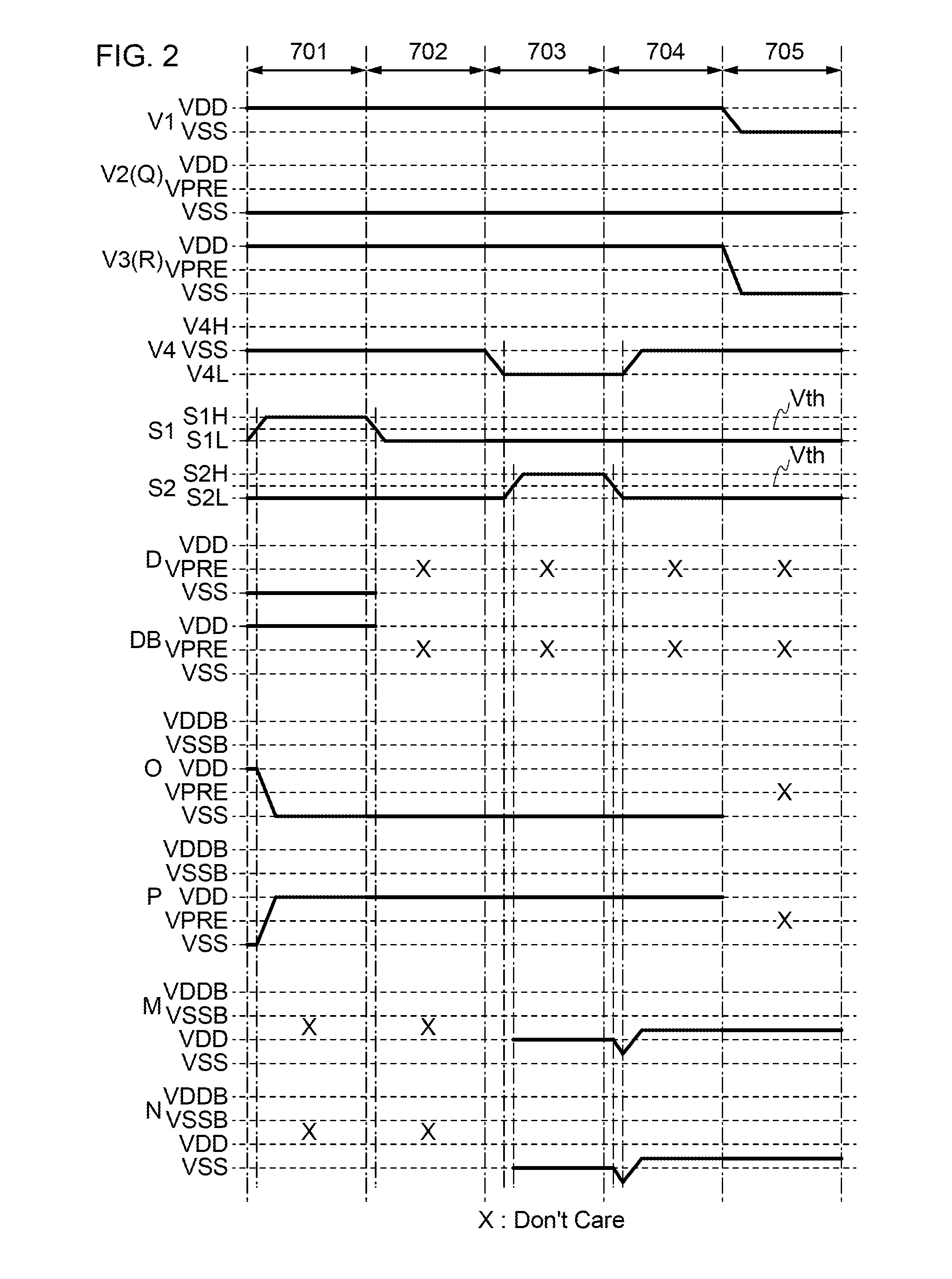Method for driving memory element
a memory element and memory technology, applied in the field of memory elements, can solve the problems of unsuitable signal processing circuits, achieve the effect of reducing the power consumption of a semiconductor device using the memory element, high speed, and reducing the power consumption of a short tim
- Summary
- Abstract
- Description
- Claims
- Application Information
AI Technical Summary
Benefits of technology
Problems solved by technology
Method used
Image
Examples
embodiment 1
[0051]A memory element 110 according to one embodiment of the present invention will be described with reference to FIGS. 1A and 1B. FIGS. 1A and 1B are circuit diagrams showing the circuit configuration of the memory element 110. In FIG. 1A, part of the circuit configuration in FIG. 1B is replaced with logic symbols. Note that in each of circuit diagrams, in some cases, “OS” (abbreviation of an oxide semiconductor) is written besides a transistor in order to indicate that the transistor includes an oxide semiconductor.
[0052]The memory element 110 illustrated in FIGS. 1A and 1B includes a logic circuit 101, a memory circuit 102, a memory circuit 103, a switch 106, and a switch 107. Further, the logic circuit 101 includes a first inverter circuit 104 and a second inverter circuit 105. The first inverter circuit 104 includes a p-channel transistor 111 and an n-channel transistor 113. The second inverter circuit 105 includes a p-channel transistor 112 and an n-channel transistor 114.
[0...
embodiment 2
[0132]In this embodiment, an example where a memory cell array is formed to include the plurality of memory elements 110 illustrated in FIGS. 1A and 1B will be described with reference to FIG. 6 and FIG. 7. FIG. 6 is an example of a block diagram of a semiconductor device including (m×n) memory elements 110.
[0133]A memory device 200 illustrated in FIG. 6 includes m signal lines SL1 (m is an integer of 2 or more), m signal lines SL2, n bit lines BL (n is an integer of 2 or more), n inverted bit lines BLB, a first wiring 221 (not illustrated), a second wiring 222, a third wiring 223, m fourth wirings 224, a memory cell array 210 having the memory elements 110 arranged in matrix of m rows (in the vertical direction)×n columns (in the horizontal direction), a first driver circuit 211, and a second driver circuit 212. The first driver circuit 211 is connected to the n bit lines BL and the n inverted bit lines BLB. The second driver circuit 212 is connected to the m signal lines SL1, the ...
embodiment 3
[0141]In this embodiment, an example of a method for manufacturing the memory element described in Embodiment 1 will be described with reference to FIGS. 8A to 8E, FIGS. 9A to 9D, FIGS. 10A to 10D, and FIGS. 11A and 11B. First, a method for manufacturing a transistor in a lower portion of the memory device will be described, and then, a method for manufacturing a transistor and a capacitor in an upper portion of the memory device will be described. Note that in cross-sectional views illustrating a manufacturing process, A1-A2 is a cross section illustrating a manufacturing step of an n-channel transistor and B1-B2 is a cross section illustrating a manufacturing step of a p-channel transistor.
[0142]First, a substrate 300 over which a semiconductor layer 304 is provided with an insulating layer 302 laid therebetween is prepared (see FIG. 8A).
[0143]Examples of the substrate 300 include a single crystal semiconductor substrate of silicon, silicon carbide, or the like, a polycrystalline ...
PUM
 Login to View More
Login to View More Abstract
Description
Claims
Application Information
 Login to View More
Login to View More - R&D
- Intellectual Property
- Life Sciences
- Materials
- Tech Scout
- Unparalleled Data Quality
- Higher Quality Content
- 60% Fewer Hallucinations
Browse by: Latest US Patents, China's latest patents, Technical Efficacy Thesaurus, Application Domain, Technology Topic, Popular Technical Reports.
© 2025 PatSnap. All rights reserved.Legal|Privacy policy|Modern Slavery Act Transparency Statement|Sitemap|About US| Contact US: help@patsnap.com



